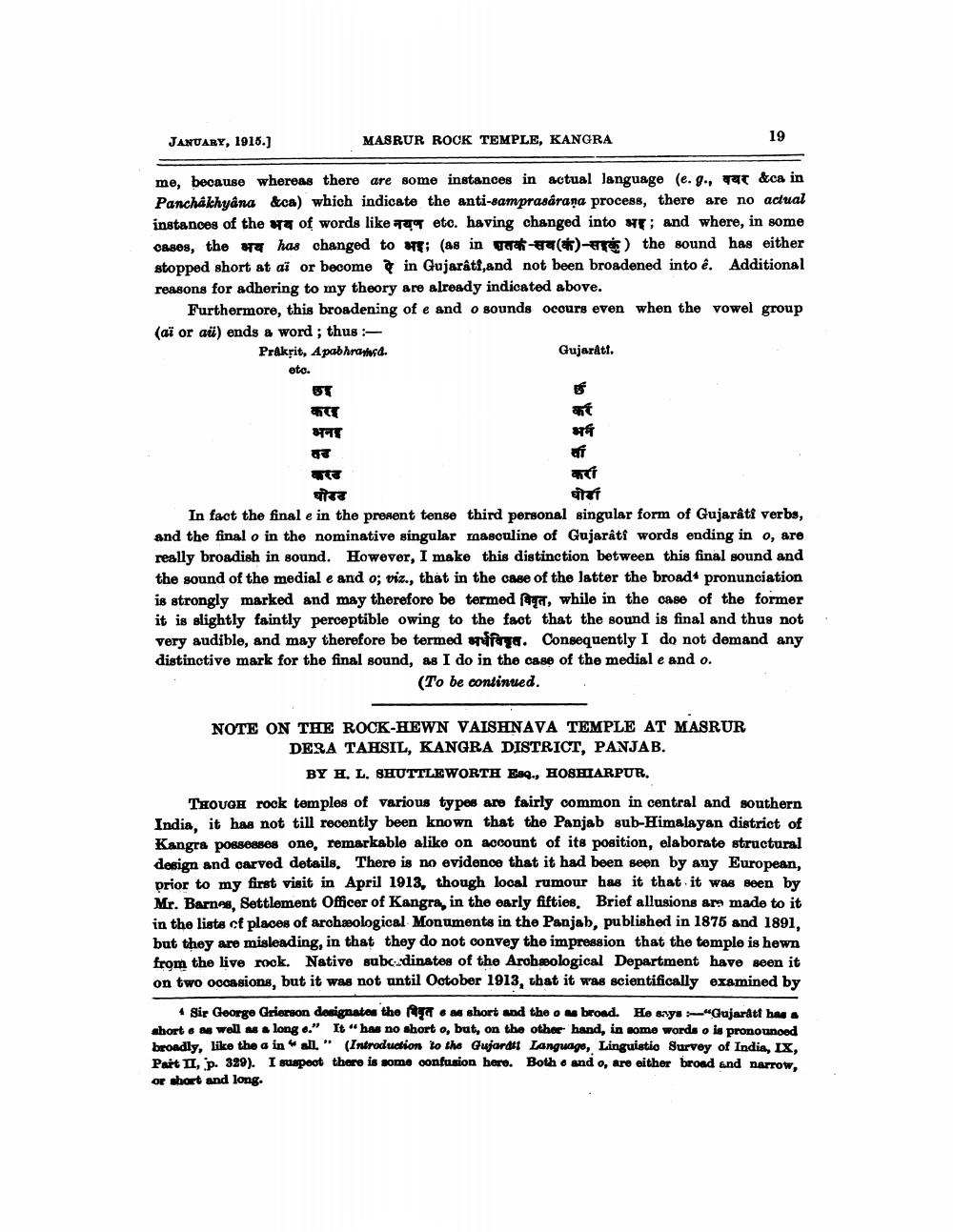________________
JANUARY, 1915.)
MASRUR ROCK TEMPLE, KANGRA
19
me, because whereas there are some instances in actual language (e. g., at &ca in Panchakhyana &ca) which indicate the anti-samprasarana process, there are no actual instances of the sta of words like Ta etc. having changed into ; and where, in some cases, the भव has changed to भा; (as in चतक-सव(क)-सइकुं) the sound has either stopped short at aï or become in Gujarati,and not been broadened into ê. Additional reasons for adhering to my theory are already indicated above.
Furthermore, this broadening of e and o sounds occurs even when the vowel group (až or aü) ends a word ; thus :Prakrit, A pabhrama.
Gujarati. eto.
ant भना
879 वी
करी घोडर
घोडा In fact the final e in the prosent tense third personal singular form of Gujarati verbs, and the final o in the nominative singular masculine of Gujarati words ending in o, are really broadish in sound. However, I make this distinction between this final sound and the sound of the medial e and o; viz., that in the case of the latter the broad pronunciation is strongly marked and may therefore be termed erat, while in the case of the former it is slightly faintly perceptible owing to the faot that the sound is final and thus not very audible, and may therefore be termed fry. Consequently I do not demand any distinctive mark for the final sound, as I do in the case of the medial e and o.
(To be continued.
NOTE ON THE ROCK-HEWN VAISHNAVA TEMPLE AT MASRUR
DEXA TAHSIL, KANGRA DISTRICT, PANJAB.
BY H. L. SHUTTLEWORTH Esq., HOSHIARPUR. THOUGH rock temples of various types are fairly common in central and southern India, it has not till recently been known that the Panjab sub-Himalayan district of Kangra possesses one, remarkable alike on account of its position, elaborate structural design and carved details. There is no evidence that it had been seen by any European, prior to my first visit in April 1913, though local rumour has it that it was seen by Mr. Barnes, Settlement Officer of Kangra, in the early fifties. Brief allusions am made to it in the lists ct places of archæological Monuments in the Panjab, published in 1875 and 1891, but they are misleading, in that they do not convey the impression that the temple is hewn from the live rock. Native subc-dinates of the Arobæological Department have seen it on two occasions, but it was not until October 1913, that it was scientifically examined by
4 Sir George Grierson designates the gate a short and the o broad. He says "Gujarati hans short as well as a long e." It has no short o, but, on the other hand, in some words o is pronounced broadly, like the a in all." (Introduction to the Gujardit Language, Linguistio Survey of India, IX, Part II, p. 329). I suspoot there is some confusion hero. Both and o, are either broad and narrow, or short and long.




